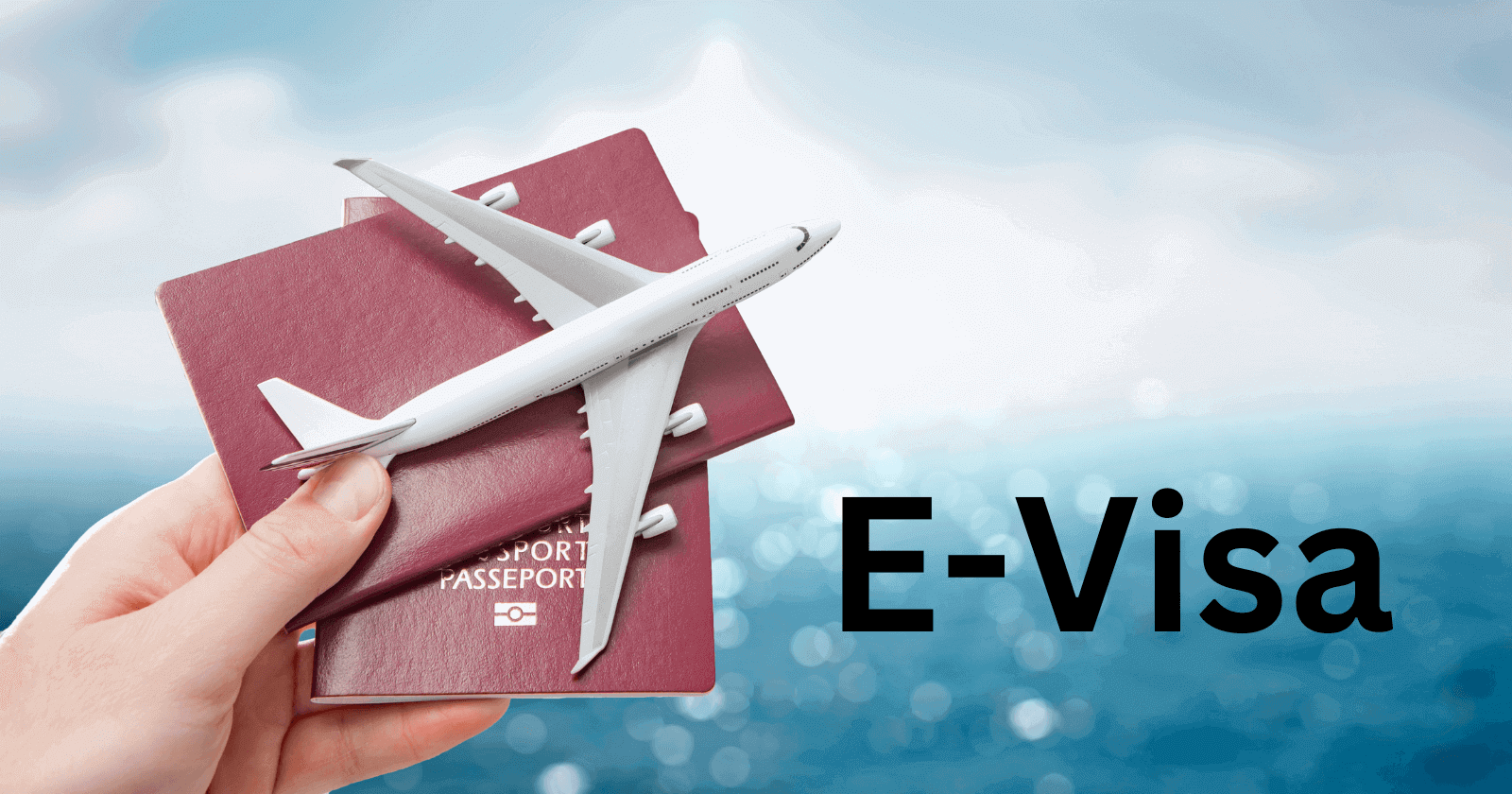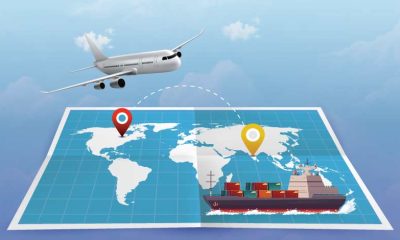Visa
Here Is The Complete List Of Countries Issuing E Visa

Many countries have implemented online visas to facilitate international travel without jeopardizing security clearances. Electronic visas and travel authorizations first appeared in the early 2000s, and most nations now offer some type of online visa. Furthermore, numerous governments have utilized online visa arrangements as a political tool to strengthen bilateral or multilateral relationships.
What Is an E visa (Online Visa)?
An E visa is an official document issued electronically by a foreign country permitting you to enter that country. The most significant advantage of an online visa is that the document is issued much faster when compared to a paper-based permit.
Types of E Visas
In most cases, online visas are issued for short-term purposes— some of the most common visas obtained online include the following:
- Tourist visa.
- Business visa.
- Medical visa.
- Transit visa.
Visas for long-term purposes such as student, work, or family visas, require you to submit a paper-based application and visit the embassy or consulate several times before receiving your permit.
E Visa Application Process
Here’s how you can apply for an online visa:
1. Find the embassy’s official website: To apply for an online visa, go to the website of the embassy or consulate that represents your destination country. The URL to the online application is posted by each representative office. Some, but not all, countries will also provide their eVisa application form on their Foreign Ministry website—be sure to check all official websites.
2. Fill out the application: Once you find the appropriate application, you can start filling out the form. You will need to have an active email address and your passport near you to put in your details.
3. Attach your documents: You must attach your documents after completing your application form. For online applications, all of your documents must be scanned and uploaded as file attachments. Documents must be a specified size and file format—instructions for submitting documents will be provided during the application process.
4. Pay the visa fee: Then after your application has been filled out and you have attached the required documents, you must submit the application fee. You have to pay using a credit card and wait while your application is processed.
5. Print your permit: If your application is accepted, the embassy/consulate will send you a confirmation email. The email will normally include a numerical code that can be used to check your visa validity at border crossings. You will also receive a confirmation document, which you must print and bring with you while traveling in case it is required by border patrol. In some circumstances, the visa receipt will enough.
Please note that the application process may differ depending on your destination country and nationality.
E-Visa Eligibility
The following eligibility conditions apply when you opt for an E-Visa:
- It is issued to travelers who visit a country for the purpose of visiting friends and relatives, recreational activities, medical treatment or short term business visit.
- The passport of an applicant must have minimum six months validity from the date of visa application.
- The passport should have minimum two blank pages for stamping by the Immigration Officer.
- Applicants should have return tickets ready to go back after staying at a destination for a previously specified duration of time.
- Children and infants should have separate E-Visas and passports.
Documents Required for an E Visa
Documents required for an online visa application vary depending on what your visit purpose is, but it usually includes the following:
- Your passport with a six-month validity period.
- Passport photographs that were taken according to the instructions.
- Supporting documents such as birth certificates, CV, employment contract, etc.
E Visa Processing Time
An online visa is usually processed within 24 hours, but the processing time may take up to a few weeks, depending on the online system.
How Long Is an eVisa Valid For?
Online visas are typically good for 30 days. However, the validity time varies depending on the country you are visiting and the purpose of your visit. Online visas are often only valid for 14 days; confirm with the consulate before applying.
E Visa Cost
An online visa can cost anywhere from $30 to $100— depending on your destination country. However, in some cases, eVisas are free of charge.
Benefits of E-Visa
An e-visa comes with the following benefits:
- You can obtain an e-visa at anytime from anywhere. What you need to have is a valid passport with access to internet connectivity.
- Getting an e-visa is a smooth and hassle-free process and helps you save a lot of time.
Can I Extend an E Visa?
In normal circumstances, you cannot extend an online visa. But, some countries may allow you to extend your eVisa in cases of emergencies.
Difference Between an E Visa and a Traditional Visa
The fundamental difference between an online and a paper-based (conventional) visa is that you do not need to visit an embassy or consulate at all for visa applications through the internet—the full visa process, including visa payment and issue document, is done remotely (online). Another noteworthy difference is that traditional visas are provided for both short- and long-term reasons, whereas eVisas are only valid for a certain time.
E-Visa Rejection
Sometimes, the immigration authority of a particular country may reject your E-Visa application. Mentioned below are some of the key reasons why your E-Visa may be denied:
- Any important information is missing.
- The validity period of your passport is less than 6 months.
- If you have provided wrong information in your visa application form.
- If you have not specified your visa type properly.
- If your intention of returning is not clear.
What Is the Difference Between an E Visa and an Electronic Authorization?
An electronic travel authorization (ETA) is a controlled system that allows you to register as a foreign visitor without having to apply for a visa or print out the permit. For an online visa, however, you must still submit an application and print a physical copy of your visa.
Countries that provide electronic authorizations include:
- Australian ETA. The Australian ETA is valid for one year, but there are two separate ETAs; for EU nationals and US nationals (plus several other countries).
- Canada eTA. If you are eligible for Canada eTA, the authorization is valid for five years, and once you register, it takes a few minutes for approval.
- The United States ESTA. The US electronic authorization is valid for two years, and similar to other ETA, it’s approved within minutes.
- ETIAS (European Union). ETIAS still hasn’t launched, but when it becomes active— in 2024— it will be issued for three years.
Electronic travel authorizations are usually agreements between your home country and travel destination, which means that not everyone is eligible to apply for an ETA.
Which Countries Issue E Visas?
The countries listed below issue an evisa online, or an electronic travel authorization for all visitors:
- Angola eVisa
- Morocco eTA
- Antigua and Barbuda* eVisa
- Myanmar eVisa
- Armenia eVisa
- New Zealand eTA
- Ascension Island* eVisa
- Nigeria eVisa
- Australia eTA
- Oman eVisa
- Azerbaijan eVisa
- Pakistan eTA
- Bahrain eVisa
- Papua New Guinea eVisa
- Benin* eVisa
- Qatar* eVisa
- Cambodia eVisa
- Russia eVisa
- Djibouti* eVisa
- Rwanda* eVisa
- Egypt eVisa
- Saint Helena* eVisa
- Ethiopia* eVisa
- Saint Kitts and Nevis* eVisa
- Gabon* eVisa
- Sao Tome and Principe* eVisa
- Georgia eVisa
- Saudi Arabia eVisa
- Guinea* eVisa
- Singapore eVisa
- Guinea-Bissau* eVisa
- South Sudan* eVisa
- Hong Kong eTA
- Sri Lanka eTA
- India eVisa
- Suriname* eVisa
- Iran eVisa
- Taiwan eVisa
- Ivory Coast* eVisa
- Tajikistan eVisa
- Kenya eVisa
- Tanzania* eVisa
- Kuwait eVisa
- Thailand eVisa
- Kyrgyzstan* eVisa
- Turkey eVisa
- Laos eVisa
- Uganda eVisa
- Lesotho* eVisa
- Ukraine eVisa
- Madagascar* eVisa
- United Kingdom Electronic Visa Waiver
- Malawi* eVisa
- Uzbekistan eVisa
- Malaysia eVisa
- Vietnam eVisa
- Mexico eTA
- Zambia* eVisa
- Mongolia eVisa
- Zimbabwe* eVisa
- Montserrat* eVisa
Important: These countries (*) issue online visas, but only for visitors from specific countries.
Visa on Arrival Alternative Countries
In cases where you are not eligible for an E visa, the following countries provide a visa on arrival as an alternative option:
- Armenia
- Kenya
- Pakistan
- Cambodia
- Kuwait
- Papua New Guinea
- Egypt
- Laos
- Saudi Arabia
- Gabon
- Mongolia
- Sri Lanka
- Georgia
- Myanmar
- Taiwan
- India
- Nigeria
- Thailand
- Iran
- Oman
- Uganda
Online Visa Application Process
Here’s how you can apply for an online visa:
- Find the embassy’s official website: To apply for an online visa, visit the official website of the embassy or consulate in your destination country. Each representative office offers a link to the online application. Some countries, but not all, will provide their eVisa application form on their Foreign Ministry website; be sure to check all official websites.
- Fill out the application: Once you find the appropriate application, you can start filling out the form. You will need to have an active email address and your passport near you to put in your details.
- Attach your documents: After completing your application form, you must attach your supporting documents. All of your documentation must be scanned and uploaded as file attachments to online applications. Documents must be a specified size and file format—you will find instructions for submitting them during the application process.
- Pay the visa fee: Then after your application has been filled out and you have attached the required documents, you must submit the application fee. You have to pay using a credit card and wait while your application is processed.
- Print your permit: If your application is successful, the embassy/consulate will send you a confirmation email. Typically, the email will include a numerical code that can be used at border checkpoints to verify your visa status. In addition, you will receive a confirmation document that you must print and bring with you when traveling in case it is necessary by border patrol. In some circumstances, a visa receipt is sufficient.
Please note that the application process may differ depending on your destination country and nationality.
Documents Required
The documents required for an online visa application vary depending on the purpose of your travel, but often include the following:
- Your passport with a six-month validity period.
- Passport photographs that were taken according to the instructions.
- Supporting documents such as birth certificates, CV, employment contract, etc.
Online Visa Processing Time
An online visa is usually processed within 24 hours, but the processing time may take up to a few weeks, depending on the online system.
How Long Is an eVisa Valid For?
Visas issued online are typically valid for 30 days. However, the validity time varies according on the nation and purpose of your stay. Sometimes, internet visas are only valid for 14 days; confirm with the consulate before applying.
Online Visa Cost
An online visa can cost anywhere from $30 to $100— depending on your destination country. However, in some cases, eVisas are free of charge.
Can I Extend an Online Visa?
Under normal conditions, you cannot extend an online visa. However, certain nations may allow you to extend your eVisa in the event of an emergency.
Difference Between an Online Visa and a Traditional Visa
The main difference between an online and a paper-based (traditional) visa is that you don’t need to visit an embassy or consulate at all for visa applications over the internet— the entire visa process is done remotely (online), even the visa payment and the issue document. Another significant difference is that traditional visas are issued for short-term and long-term purposes, while eVisas are temporary.
What Is the Difference Between an Online Visa and an Electronic Authorization?
An electronic permission is a controlled mechanism between countries that allows you to register as a foreign visitor without having to apply for a visa or print a permit. For an online visa, however, you must still submit an application and print a physical copy.
Countries that provide electronic authorizations include:
- Australia ETA. The Australian ETA is valid for one year, but there are two separate ETAs; for EU nationals and US nationals (plus several other countries).
- Canada eTA. If you are eligible for Canada eTA, the authorization is valid for five years, and once you register, it takes a few minutes for approval.
- The United States ESTA. The US electronic authorization is valid for two years, and similar to other ETA, it’s approved within minutes.
- ETIAS (European Union). ETIAS still hasn’t launched, but when it becomes active— in May 2025— it will be issued for three years.
Electronic travel authorizations are often agreements between your home country and your trip destination, thus not everyone is qualified to apply for an ETA.






















